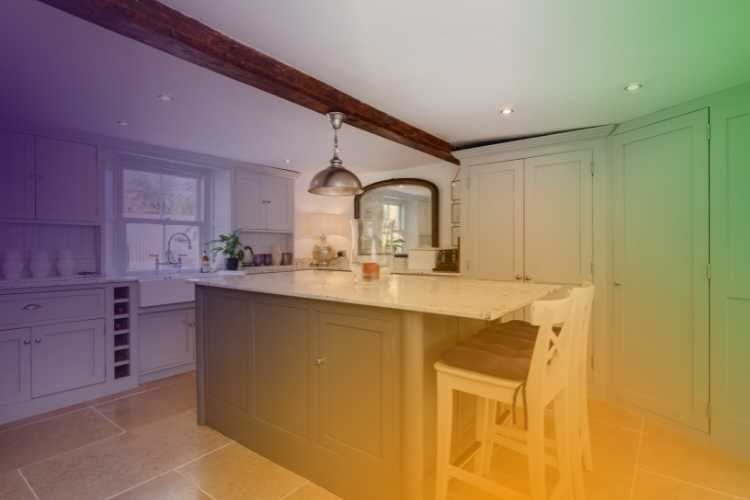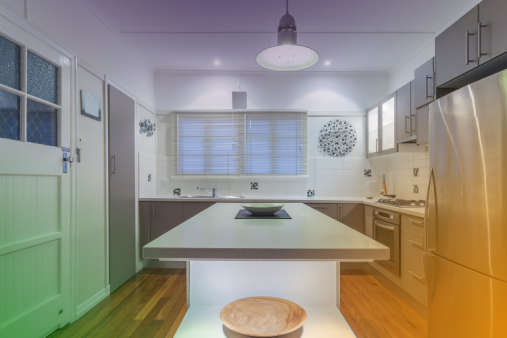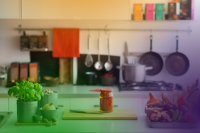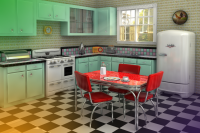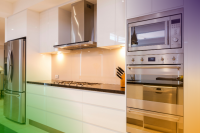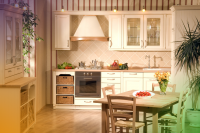Most of us are aware of the term “Shaker Kitchen”, and maybe even associate the style with traditional wooden style. But what does Shaker really mean, and where does the name come from? Here’s our ultimate guide to Shaker style and how to incorporate it into your own new kitchen design.
Who were the Shakers?
Shaker style comes from the United States, and the name comes from a religious sect whose full name is the “United Society for Believers in Christ’s Second Appearing”. This order had a lot in common with the better-known group called the Quakers, and they are sometimes known as the “Quaker Shakers”. Shaker philosophy is all about living a good life with simple principles. Shakers are all about honesty, simple living and usefulness. This ethos is carried through into every aspect of their lives, not just furniture. But as far as your kitchen is concerned, Shaker style is all about creating something simple, with no excessive decoration or adornment – decoration was felt to be excessive at a time when those extra pieces of wood could be used for firewood or to make another useful object. Furniture has practicality at its heart, and original Shaker furniture was designed to last a lifetime.
Shaker Kitchens – What Do They Look Like?
The defining aspect of any Shaker kitchen is wood. Originally, the Shaker communities constructed their kitchens from whatever wood was growing locally, and the design we’re familiar with today dates back as far as the 18th century. The traditional Shaker kitchen cupboard door is either a flat surface, or has a panel effect cut into the front. As doors are made from wood, they can either be left in a natural finish and waxed, or painted. Painting is the traditional way of finishing a Shaker kitchen - using lots of different types of wood to build the cabinets could create a disjointed and mismatched end result, so painting everything the same colour solved this problem. Traditionally, Shaker kitchens would have been white or cream, but there is no such limitation on which colour you choose for a modern Shaker design. Some of the very high-end wooden Shaker style kitchen cabinets are painted in shades of dark blue, or green.
Will a Shaker Kitchen Go Out of Fashion?
One of the main advantages of this style of kitchen is that it has been around for over 200 years, and has never really gone out of fashion. Shaker style kitchens are a standard choice for period properties, but that’s not to say that they can’t look great in more modern properties too. If you are looking for a style of kitchen which isn’t going to date, and which is going to appeal to a wide cross-section of potential buyers if you are thinking of putting your property on the market, then Shaker could be the ideal choice.
Other Design Choices in a Shaker Kitchen
Choosing your new Shaker style cabinets is just the first decision you will have to make. Once you’ve settled on a layout for your new kitchen and the finish of the cabinets, the next thing to think about is all the rest of the elements which make up a kitchen, from worksurfaces to flooring. A Shaker kitchen can be matched with a wide range of worksurfaces. Often, the best choice is a wooden worksurface, although these can require a bit of extra care compared with other styles of surface. Granite and marble are also good choices. As long as you avoid anything too sparkly or 21st century, you will be able to find the perfect worksurface for your kitchen. Seek inspiration in some of the large kitchen showrooms, where you can see lots of examples of different units and surfaces in combination.
Handles for a Shaker Kitchen
Originally, handles on a Shaker style kitchen would have been made from the same wood as the rest of the unit. Simple wooden knobs or handles are still a great choice, and you can either paint them to match the cupboard door, or to match a wooden worksurface. If you’d prefer a metal handle, then consider the basics of Shaker design while shopping. Choose handles which have a simple design, and avoid anything coloured or sparkly. If you find it difficult to imagine what handles are going to look like on any particular unit, then spend some time walking around a showroom, holding up various handles against cabinets to see which combination you prefer. Handles aren’t the most expensive part of a kitchen so if you do get it wrong, it’s not going to cost a fortune to change them for something else if you decide after a while that your original choice really doesn’t work.
Buying a Shaker Kitchen
There is no shortage of Shaker style kitchens on the market, from bargain basement kitchens in the large DIY stores, to bespoke solid oak kitchens handmade by a local craftsman. Set your budget early on and try your best to stick to it. It’s easy to get carried away when faced with a whole showroom full of shiny new kitchens and a pushy salesman. Many of the larger retailers will allow you to bring samples home with you, which is a good way to compare lots of different finishes in your own home. Play around with different configurations of your kitchen, and perhaps downgrade your choices of appliances or flooring if it’s all getting a bit pricey.
Most larger companies will offer their own financing on kitchen installations but is this always the best option? A zero percent deal can be tempting, and is often hard to beat, but if you’re going to be paying interest on your loan, it’s worth shopping around and seeing if you can get a better deal from your bank or another lender. There is plenty you can do to cut the cost; whether that is buying the kitchen online and then arranging your own fitter, or opting for second hand.
